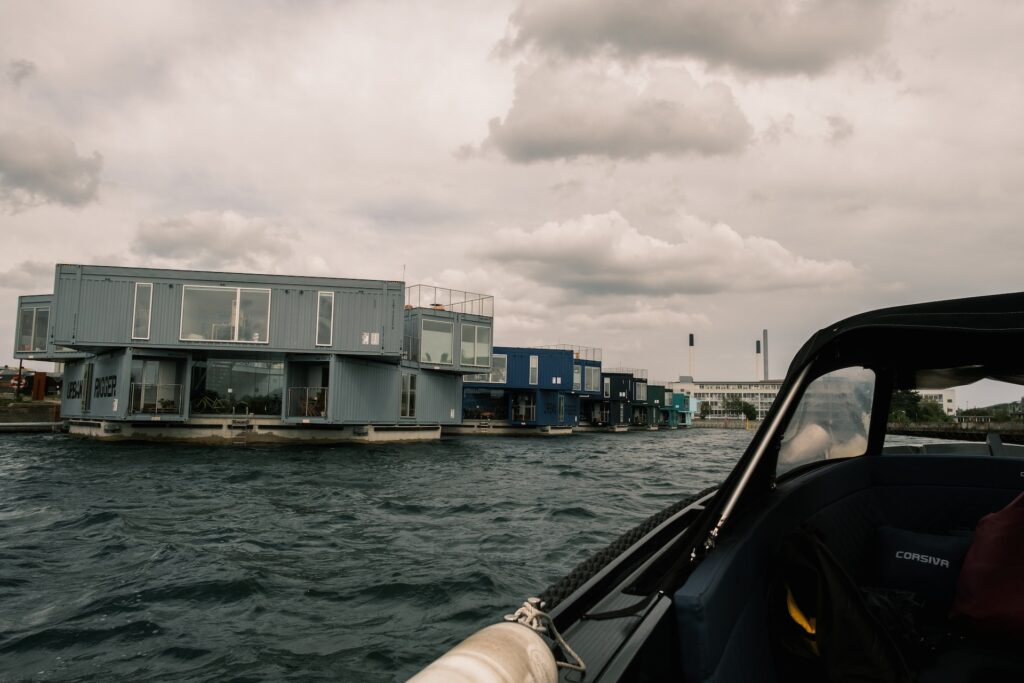Building homes using shipping containers has gained significant popularity in recent years. However, many misconceptions and myths surround this alternative housing option.
In this article, we will discuss the common myths about shipping container homes and how they are just not true.
By the end of this article, we hope to give you more information about the things you need to consider when using shipping containers to build a home for yourself or your family.
Building shipping container homes doesn’t need to be overcomplicated. Having the correct information will help guide you with your decisions.
So, let’s put the myths surrounding container homes to rest and get the facts straight! With the right planning and knowledge, you can have a comfortable and sustainable shipping container home.
Key Takeaways
- Shipping container homes are often an affordable and eco-friendly housing option, but it’s important to understand the truths behind them.
- Consider the materials used and construction methods to ensure a container home is constructed sustainably.
- Burying shipping containers as-is is not recommended since they must be modified to withstand the pressure of the surrounding soil.
- Insulation is essential for container homes, but it’s not always necessary to use spray foam. Alternatives such as cellulose and fiberglass are available.
- Additionally, the existing walls and roof of the container may provide sufficient insulation.
- In climates where container homes can become too hot, proper insulation and ventilation can help mitigate this problem.
- Insulation reduces heat transfer between the inside and outside of the container, while ventilation prevents the buildup of heat within the container.
- Building a shipping container home requires expertise and planning. Contrary to popular belief, these homes are not exclusively cheap.
- The cost of construction is usually lower than traditional construction, and it can be tailored to fit different budgets.
- With the right materials and construction methods, they can be an eco-friendly and affordable solution.
Truth 1: Shipping Container Homes Aren’t Always Eco-Friendly
Shipping container homes have long been seen as an eco-friendly option for housing. However, it’s important to understand the facts before making a decision.
The sustainability of a container home depends on various factors. One of these is whether the containers used are new or used.
New containers may be necessary in some cases, but newer containers for construction can have a greater environmental impact than repurposing used containers.
By giving these otherwise unused containers a new life as housing structures, we can reduce their environmental impact.
Using new containers can lead to increased production and resource consumption. This can be avoided by building with used containers, which also has its own set of benefits.
Repurposing and preventing waste can be more beneficial to the environment than creating new products.
Overall, building with shipping containers offers several advantages, including affordability and durability. However, their ecological footprint can vary depending on sourcing and construction methods. It’s important to consider these factors when deciding to build a shipping container home.
Truth 2: You Can’t Bury Your Shipping Containers As-Is
You may be surprised to find out that burying shipping containers isn’t as straightforward as you thought. Building underground bunkers with shipping containers is doable, but there are several things to consider.
When stacked one on top of the other, shipping containers are designed to hold weight. That weight is placed directly on the floor and distributed through the corner posts.
But when containers are buried, the surrounding soil puts weight on the roof and sides, which containers aren’t built to withstand. This means that extra structural reinforcements are necessary to ensure safety.
Corrosion is another issue to take into account when constructing an underground home with a container. Because of these restrictions and complexities, it’s typically recommended to avoid using containers for this purpose unless you’re willing to invest in additional modifications and reinforcements.

Truth 3: You Should NOT ALWAYS Use Spray Foam Insulation
Spray foam insulation is a great choice for shipping container homes because it provides superior insulation and protection against moisture. However, it’s important to know that there are other options available.
When deciding on the best insulation for your shipping container, consider factors like design and climate. Closed-cell spray polyurethane foam (ccSPF) is often the preferred choice because it has a high R-value per inch and vapor retarder capabilities.
However, it may not be the most suitable or cost-effective option for all applications. For example, if you plan on insulating the outside of your container or live in an area with low condensation, other types of insulation may be more suitable.
It’s essential to consider your specific needs before deciding on the insulation for your shipping container home.
While ccSPF is often the go-to option, it’s not always necessary or worth the extra expense. Therefore, understanding your needs and doing your research can help you make an informed decision that best suits your project.

Truth 4: Shipping Container Homes Aren’t Too Hot To Live In
Living in a shipping container home doesn’t have to be unbearable during hot weather.
Despite the misconception that shipping containers get too hot on the outside, proper insulation and air conditioning can make the inside comfortable.
Insulation acts as a barrier between the exterior and the interior, allowing for temperature control and a pleasant living environment.
Building with shipping containers is also economical and can be a great option for those looking for an affordable yet comfortable home.
Shade and cool roof coatings can help keep the external heat at bay, and air conditioning can keep the interior cool.
Don’t let the myths about shipping container homes prevent you from exploring this unique option. With the right insulation and climate control measures, living in a shipping container can be a comfortable and economical solution.
Truth 5: Building With Shipping Container Home Construction Isn’t That Complex
Constructing a shipping container home may sound complex, but it can be simplified by utilizing the inherent structural qualities of the containers.
Contrary to popular belief, building a shipping container home does not require an extensive background in construction.
The prefabricated walls, floors, and roofs make the process much easier than traditional homebuilding methods.
Container homes offer an affordable alternative to traditional building materials. For those just starting out, it is recommended to begin with a single-story, rectangular design.
As the project grows to include more intricate elements, like stacking and joining containers, it may be beneficial to seek professional assistance for necessary local approvals.
With the right planning on your budget, floor plans, and research, anyone can successfully create their own shipping container home, regardless of prior experience.

Truth 6: Using Shipping Container Homes Aren’t Always Cheap
Shipping container homes have been gaining popularity due to their affordability and flexibility. Although it’s often assumed that all container homes are cheap, the cost of construction can vary greatly depending on a number of factors.
Containers are essentially building blocks, meaning that you can design anything from a small weekend cabin to a larger office.
The cost of a container home can be kept to a minimum by selecting more basic finishes and designs. However, even when compared to traditional building methods, most container homes tend to be cost-effective.
Before embarking on a container home project, it’s important to consult local building authorities and professionals who specialize in alternative building materials.
It’s important to factor in insulation requirements and the cost of energy-efficient modifications. By understanding the true potential and limitations of shipping container homes, we can make informed decisions about our projects.
Truth 7: Shipping Container Homes Aren’t Only For The Rich
Shipping container homes are not just for the wealthy, despite what many people may think. In fact, the concept of using shipping containers to create affordable housing solutions began as a means to combat the rising costs of traditional homes.
The affordability of container homes is what makes them attractive to people on various budgets. Constructing a home from shipping containers is significantly cheaper than building a traditional dwelling, and many of these homes can be built for under $50,000.
This has opened up the market for people who may not have the financial resources to purchase traditional real estate.
Debunking the myth that shipping container homes are exclusive to the wealthy can make people realize that they can also make a beautiful container home that is affordable and cost-effective.
Debunking Myths
Understanding the truths behind shipping container homes will help you make informed decisions about your dream container home.
It’s important to ensure that shipping container homes are built sustainably by considering materials and construction methods.
Burying containers without modification can compromise their structure. Alternative insulation options like cellulose or fiberglass exist, and using the container’s walls and roof for insulation is possible.
Proper insulation and ventilation can prevent overheating in container homes. Building a shipping container home requires expertise and planning, and while they can be cost-effective, they cater to various income levels.
Careful consideration is needed to create an environmentally friendly and functional shipping container home.
By understanding these truths, you can make informed decisions about shipping container homes as a housing option.

